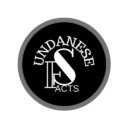The Remarkable History of the Pajajaran Kingdom: Origins, Location, Glory, Decline, and Legacy
The Pajajaran Kingdom stands as one of the most influential Hindu kingdoms that once ruled the western part of Java Island, Indonesia. It played a pivotal role in shaping the culture and historical trajectory of the Nusantara archipelago. With several archaeological remains still present in West Java, the Pajajaran Kingdom offers a glimpse into a glorious Hindu-based civilization. Let’s dive into the fascinating journey of this ancient kingdom.

The Origins of the Pajajaran Kingdom
To begin with, the Pajajaran Kingdom emerged around the 10th century AD. It branched off from the Sunda Kingdom and was officially established in 923 AD by Sri Jayabhupati. The kingdom’s full title was The Sunda Pajajaran Kingdom, and it quickly rose to prominence with its capital located in Pakuan, which today is known as Bogor.
According to historical Portuguese maps, Pakuan functioned as the administrative heart of the kingdom. Not only did it dominate West Java, but its influence also extended into parts of Central Java and Jakarta. The kingdom was strategically placed between the Ciliwung and Cisadane rivers, allowing it to control vital trade routes and flourish economically.
Location and Strategic Importance
Located in Pakuan Pajajaran, the capital benefited from its geographic advantages. The natural terrain, flanked by rivers and steep cliffs, provided both defense and access to trade. Consequently, Pajajaran thrived as a center for governance, agriculture, and commerce.
The Golden Age Under Prabu Siliwangi
The kingdom experienced its peak during the reign of Sri Baduga Maharaja, famously known as Prabu Siliwangi, who ruled from 1482 to 1521 AD. Under his leadership, Pajajaran underwent significant transformations. He implemented policies to improve the welfare of his people and initiated major infrastructural development.
At that time, the kingdom practiced a feudal political system, with the king holding absolute authority. Shaivite Hinduism dominated religious life, as evidenced by inscriptions such as Kawali and Sahyang Tapak. Despite this dominance, Vaishnavite Hindus and Buddhists also practiced their faiths peacefully, showcasing religious tolerance.
Economically, the kingdom relied heavily on agriculture and trade. Portuguese explorer Tome Pires documented that the city of Pakuan was a prosperous, orderly, and well-managed capital.
The Decline of the Pajajaran Kingdom
After the passing of Prabu Siliwangi, the kingdom started to weaken. Succession disputes and increasing Islamic influence from Cirebon, Demak, and Banten threatened the kingdom’s stability. Gradually, the political climate deteriorated.
By 1597, the Banten Sultanate, led by Maulana Yusuf, launched a decisive invasion. The campaign aimed to seize the batu penobatan (coronation stone), which symbolized royal authority. Once Pakuan fell, Maulana Yusuf declared himself the legitimate heir due to his royal lineage. This event marked the official end of the Pajajaran Kingdom.
Rulers of the Pajajaran Kingdom
Throughout its history, the kingdom saw a succession of leaders:
- Sri Baduga Maharaja (1482–1521) – Brought about the kingdom’s golden era.
- Surawisesa (1521–1535) – Maintained the kingdom but introduced no significant changes.
- Ratu Dewata (1535–1543) – Faced administrative failure and resigned.
- Ratu Sakti (1543–1551) – Unpopular and perceived as extravagant.
- Ratu Nilakendra (1551–1567) – Fled during a Banten invasion, worsening instability.
- Raga Mulya (1567–1579) – Lacked leadership and saw further decline.
These frequent changes in leadership accelerated the downfall of Pajajaran.
Unification Efforts and Geographic Advantages
Sri Baduga Maharaja played a crucial role in uniting divided territories. As the grandson of Prabu Wastukencana, ruler of the Galuh Kingdom, he managed to reunify the realm after years of conflict. He relocated the capital to Pakuan, utilizing its strategic geography to strengthen defense and administration.
The Legacy of the Pajajaran Kingdom
Although the kingdom fell centuries ago, it left behind a legacy rich in cultural and historical significance. Various inscriptions and archaeological sites continue to tell the story of its once-mighty reign. These include:
- Cikapundung Inscription
- Batu Tulis Inscription
- Huludayeuh Inscription
- Ulubelu Inscription
- Kebon Kopi II Inscription
- Sunda-Portuguese Treaty Inscription
- Karangkamulyan Site
Each artifact sheds light on the governance, religious practices, and daily life of the kingdom’s citizens.
Final Thoughts
In conclusion, the Pajajaran Kingdom was more than just a political entity—it was a cultural beacon for the Sundanese people. Its rise and fall reflect the dynamic shifts in religious, political, and economic systems throughout Indonesian history. By exploring its past, we gain valuable insights into our present cultural identity and heritage.
Read More:
Unveiling the Hidden Power of Kujang: Not Just a Weapon, But a Sacred Code of the Sundanese Soul!
References
- Carita Parahyangan
- Bujangga Manik Manuscript
- Tome Pires, Suma Oriental
- Archaeological reports on Batu Tulis and Karangkamulyan Sites
- SindoNews.com, “Sejarah Kerajaan Pajajaran,” Intan Rachmasari, Sept 29, 2023







